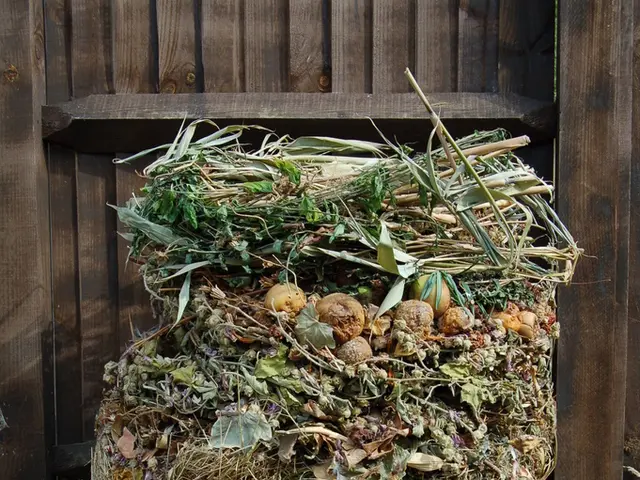Creating a DIY Moss Pole for Indoor Plants: An Ideal Solution for Montsera, Pothos, and Other Species
A DIY moss pole is an affordable and effective solution for supporting large or vigorous climbing houseplants. Here's a step-by-step guide on how to create your own moss pole.
To begin, cut wire mesh to a size that balances stability, moisture retention, and efficient moss use. Aim for about 15 squares in circumference, each square being roughly 1 to 1.25 cm. This size gives a circumference of around 18 cm and a diameter of about 6 cm, which is suitable for most houseplants.
Next, soak sphagnum moss until it is fully hydrated and fluffy. This ensures better moisture retention for the plants.
Form the pole structure by shaping the wire mesh into a cylinder matching the chosen circumference and secure it so it holds shape and stands upright. Attach the soaked sphagnum moss evenly along the outside of the mesh cylinder, packing it tightly to retain moisture and provide good anchorage for aerial roots.
Optional extras include inserting a poly pipe or a sturdier central core inside the mesh cylinder for extra support and ease of handling and planting. Additionally, you can wrap the outside of a mesh moss pole with additional moss for a more natural look.
Place the moss pole into the plant’s pot, ensuring it is stable. The climbing plant can then be trained to grow around and cling to the moss pole.
Making a moss pole yourself allows for customization of the size and shape, and can save money compared to purchasing a pre-made moss pole. When plants like monstera or pothos can send aerial roots into a moss pole, it can trigger the growth of larger, more spectacular leaves.
The natural texture of a moss pole allows climbing plants to anchor themselves more securely, improving their strength. Use string, twine, or floral wire to secure the moss to the pole. Mist the moss on a moss pole to keep it slightly moist. Moist moss encourages epiphytic plants to grow beneficial aerial roots, similar to how they behave in rainforests.
Moss poles help plants to climb upwards, resulting in better growth patterns and a more controlled yet dramatic display. They are beneficial for vining and climbing houseplants, offering a softer, more organic support than synthetic stakes or plastic trellises.
For larger plants, consider using PVC-coated mesh to create a thicker moss pole. Secure a mesh moss pole with zip ties or wire to prevent it from tipping.
With these easy steps, you can create your own moss pole and provide a natural and supportive environment for your climbing houseplants to thrive.
You can enhance your home-and-garden lifestyle by creating a DIY moss pole for your climbing houseplants. The moss pole, made from wire mesh and sphagnum moss, can be customized to suit most houseplants, providing a natural and supportive environment for them to thrive.




